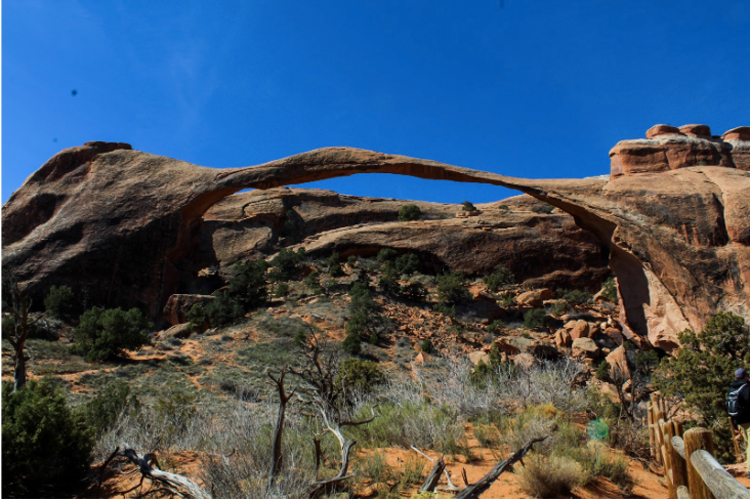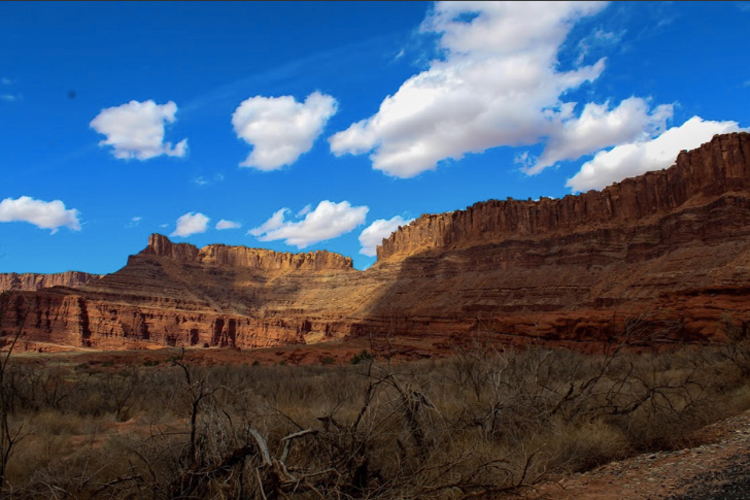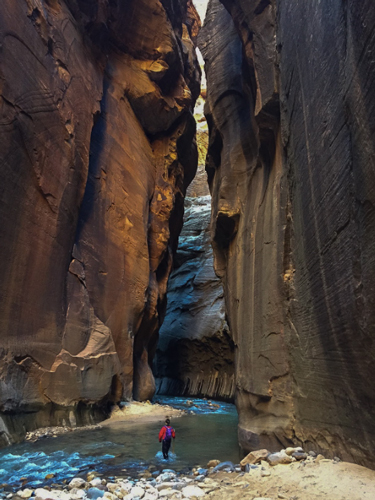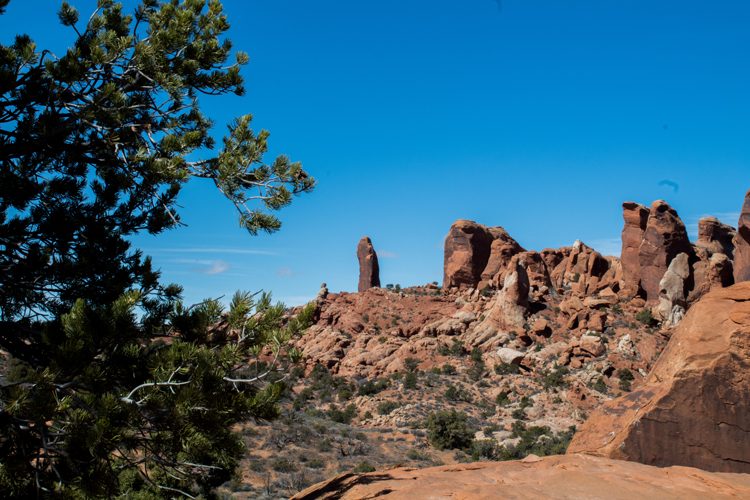Some people have almost no idea what the geography is like outside their home state. I used to be one of those people. When I was nine, my family moved to Utah, and I had no idea what to expect. I remember saying to one of the friends I was leaving behind, “Utah! It’s just going to be flat fields and farms!” When we descended into the Salt Lake Valley, though, I knew I was largely mistaken. The towering snow-covered mountains loomed over the city as if they were its protectors, and there was not a field or cow in sight. My nine-year-old self was in for an even bigger surprise when we visited Southern Utah for the first time, a wonderland of bright orange rocks in spectacular dream-like formations. Since my debut into the southern part of the state, I have visited all five National Parks, each with its own charm and wonders. For those of you who haven’t had the chance to head to these unbelievable parks, here’s the scoop on each one.
Bryce Canyon National Park

Bryce Canyon National Park | Chelsea Hafer
Location: Bryce, UT
Visitors in 2017: 2,571,684
Best time of year to visit: All year
Pros: Beautiful year-round
Cons: Relatively small with a homogenous landscape
Most popular attraction: Hoodoos (red rock spires)
Where to stay: The Lodge at Bryce Canyon
Bryce is a truly spectacular park. From many points in the park, you can get an extensive view of the entire canyon and far past it, including the bright orange hoodoos, which look like spires of an ancient rock castle. The park is the second-most popular in the state, and visitors fly in from across the world to bear witness to the magnificent rock formations protruding into the sky. Bryce is gorgeous year-round. I visited the park in February, and although some of the trails were muddy with melted snow, most of the hiking was manageable. You can rent snowshoes and cross-country skis if you’re interested in traversing the terrain in the winter. In the summer, just bring your hiking shoes and some light clothing, because the park reaches 90° in the summer months. The downside to the park is its small size and uniform landscape. Although the hoodoos are natural wonders, once you’ve seen one, you’ve seen them all. The park has 11 trails, many of them interconnected to make for longer hikes if you choose. Bryce is a great park to visit over a long weekend, as it is usually not crowded and you could explore the whole park in a few days. I thoroughly enjoyed touring Bryce Canyon, so give this magical hoodoo kingdom a visit!
Capitol Reef National Park

Capitol Reef National Park | Cody Allison
Location: Torrey, UT
Visitors in 2017: 1,150,165
Best time of year to visit: Mid-Spring through Early Summer
Pros: Lots of history behind the park
Cons: Unpaved roads
Most popular attraction: Hickman Bridge
Where to stay: Capitol Reef Resort
Named for its white domes resembling government buildings, this park is a hidden treasure nestled in the southern part of the state. It is full of expansive views that set itself apart from many sights in the other parks. Capitol Reef is refreshingly uncrowded compared to Utah’s other National Parks, so feel free to visit any time of year. However, if you’re looking for a moderate temperature for your hikes, make sure you stop by in spring or fall. The spring is a truly stunning season to visit Capitol Reef because the fruit trees all blossom, creating a stunning contrast between the bright flowers and chalky landscape. In the summer, fruit orchards are open to the public for harvest. These historic fruit farms were once home to pioneers, who prospered in the Fremont River Valley. Capitol Reef is full of fascinating history and astonishing rock formations, a perfect trip for those of us looking to escape the busy world and step back in time.
Arches National Park

Arches National Park | Chelsea Hafer
Location: Moab, UT
Visitors in 2017: 1,539,028
Best time of year to visit: Late Spring or Early Fall
Pros: Rock formations that are unlike anything else in the world
Cons: You have to hike to get to all the sights
Most popular attraction: Delicate Arch
Where to stay: Moab Springs Ranch
Home of the famed Delicate Arch that serves as the backdrop to Utah license plates, this illustrious National Park is full of nooks and crannies to explore. Most arches are only accessible by hikes, ranging from half a mile to eight miles, so this park is not particularly friendly for those unable to navigate rocky trails. The over 2,000 red sandstone arches are certainly a magnificent sight, though, for those who take the time to visit. Some of the most popular marvels in Arches include the expansive Landscape Arch, solitary Delicate Arch, and the giant red labyrinth known as the Fiery Furnace. Visitors can reside in Moab, a charming vacation town, or camp inside the park. You’ll love exploring the countless activities available in Moab and the delightful shops and restaurants run by locals. Your vacation in Arches can be whatever you choose it to be – full of long excursions, hour-long strolls, nights spent under the stars, or relaxing in luxury – so make sure you look into all your options when planning your voyage to this magnificent red rock realm.
Canyonlands National Park

Canyonlands National Park | Chelsea Hafer
Location: Moab, UT
Visitors in 2017: 742,271
Best time of year to visit: Late Spring or Early Fall
Pros: Diverse landscapes and wildlife
Cons: Hard to see all the attractions without a lot of time
Most popular attraction: Island in the Sky
Where to stay: Rent a cabin with Canyonlands Lodging
Stepping into Canyonlands will make you feel like you’ve just landed on another planet. The steep walls of the chasms ascend high into the sky, instantly shrinking everything around them. Canyonlands is the biggest park in the state, so if you want to explore it fully, be prepared to spend up to a week in the park. The diversity in the landscape is unlike any destination in the world. Colossal pine trees thrive with their roots in the chalky red dust and solitary spires jet into the vast sky above. Countless species call Canyonlands home, so don’t be surprised when you spot a mule deer or bobcat. Exploring Canyonlands often requires a vehicle, as the expansive park covers over 250,000 acres. For adrenaline junkies, rock climbing up sheer cliffs and rafting down the mighty Colorado River in Cataract Canyon are just a handful of the activities the park offers. If you’re looking for a more serene way to enjoy the landscape, take a drive down to the scenic Island in the Sky district or stroll along a trail to Mesa Arch to enjoy the sunrise. This mixed collection of landscapes can be explored however you’d like, so take the time to look into the countless options available. If you’re looking to get away from busy city life, you can even rent a cabin in the park or camp on one of the many campgrounds it offers. This otherworldly section of the state is not something you want to skip, so plan an adventure in Canyonlands and come explore this breathtaking region.
Zion National Park

Zion National Park | Chelsea Hafer
Location: Springdale, UT
Visitors in 2017: 4,504,812
Best time of year to visit: Late Spring or Early Fall
Pros: Spectacular views
Cons: Large crowds on holidays and in the summer
Most popular attraction: Angels Landing
Where to stay: Desert Pearl Inn
Although I have great respect for all the National Parks in Utah, Zion is admittedly my favorite. This park has nestled itself into my heart over the course of six years and several visits with my family. By the time we left in May – our last visit to the park before we move out of the country – we had hiked almost every trail on the map. The drive through the canyon alone is absolutely stunning, so if even you’re not a hiker, this park is worth the trip. There are trails of all distances, so whether you’re looking to walk for a few minutes or a few days, you’re sure to enjoy the hidden spots and breathtaking vistas in Zion. One of my favorite corners of the park is the Narrows. This windy slot canyon can only be explored by those trekking up or down the river that carves it. Explorers can rent wetsuits and equipment from a variety of outfitters in town. The escapade can begin at either the mouth of the river or the end of the canyon, so you can choose to hike upstream or downstream. The narrow passage can be taken as far as you’d like before you turn around, or you can make the overnight adventure proceeding from one side to the other. No matter how far you delve into the Narrows, there’s no more authentic view of Zion than this. Another prominent hike in the park is Angel’s Landing, a strenuous hike to a picturesque vista. Zion does get crowded, though, so make sure your visit doesn’t coincide with a holiday weekend so you don’t have to wait in hour-long lines to hop on the shuttle up the canyon. The summer is also crowded – and steamy – so try to plan a visit in in the spring or fall. However, no matter when your trip to Zion falls, expect to fall in love with this oasis of beauty in the middle of the desert.

